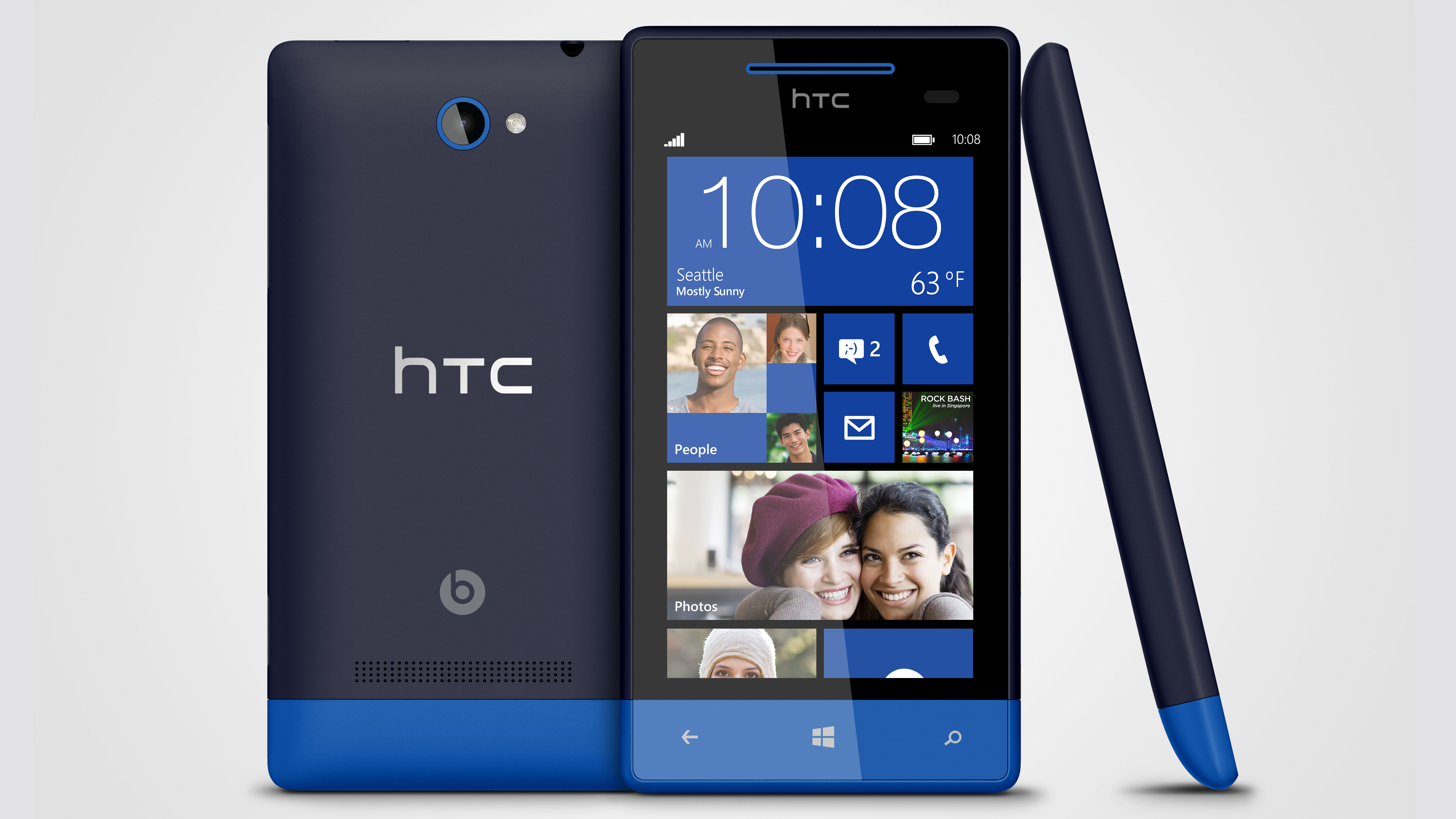TechRadar Verdict
The HTC 8S is a good all round handset. It doesn't do a terrible job of anything but it also struggles to stand out. If you're set on Windows Phone 8 and don't want to drop a huge amount on a handset then for the time being this a good buy.
Pros
- +
Stylish design
- +
MicroSD card slot
- +
Great social network integration
- +
Good for messaging
Cons
- -
Lacklustre battery
- -
Slow browser
- -
Only 4 GB of internal storage
- -
No smart dialling
Why you can trust TechRadar
HTC have been a major Windows Phone player for a while now, arguably second only to Nokia in their output. With Samsung eating up much of their Android market share and Microsoft launching an exciting new version of Windows Phone, the platform is obviously going to be a key area of focus for the Taiwanese firm.
So it's no surprise that it hasn't hung around to release some Windows Phone 8 handsets, with both the mid range HTC Windows Phone 8S and its big brother the HTC Windows Phone 8X competing for your attention.
Since its launch, the HTC 8S now has a number of competitors in the Windows Phone 8 space. Its main rivals are probably the Nokia Lumia 620 and the Lumia 520, with the former costing around £30 more, and the latter £50 less.
Compare that to the HTC Windows Phone 8S, which can be picked up for around £150 (around $365/AU$345), and you'll see it's got some pretty close company in the budget space.
The specs confirm its position as a mid range handset. Powered by a 1 GHz dual-core processor and packed with just 512 MB of RAM. With a 5 megapixel camera, 720p video and just 4 GB of internal storage (albeit with support for microSD cards of up to 32 GB), everything about it screams mid-range.
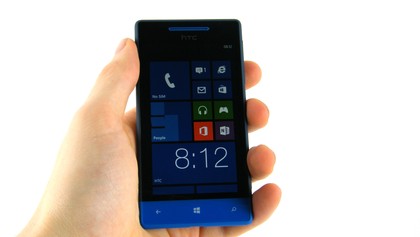
Things don't change with the Super LCD Gorilla Glass display. At 4 inches it's a decent size but not huge and its 480 x 800 resolution (coming in at 233 pixels per inch) is fine but nothing particularly impressive.
In other words it's got solid specs all around, which on paper are neither impressive nor disappointing for the price.
Sign up for breaking news, reviews, opinion, top tech deals, and more.
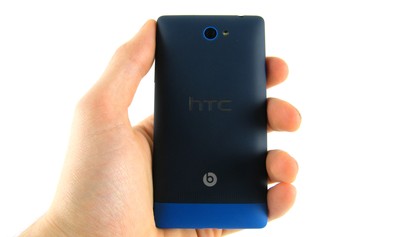
The only potentially disappointing spec is its 1,700 mAh battery, which seems a little on the small side, but it's around the same size as the one in the bigger and more powerful Samsung Galaxy S2 and that holds up well enough.
The first thing to stand out about the HTC 8S is its two-tone colour scheme. Bright colours have become a staple of Windows Phone, but normally you just get the one colour per handset.
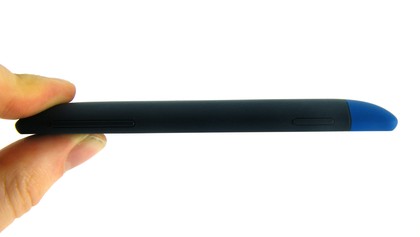
With the HTC 8S the bulk of the phone is one colour, while a stripe at the bottom is another. Interestingly this sets it apart even from the other phone in the range- the HTC 8X, which again is all one colour. It's a great and distinctive look, making the phone immediately recognisable no matter what angle it's viewed at.
With dimensions of 120.5 x 63 x 10.3mm it's not the thinnest phone you'll ever see, but the curved edges make it seem slightly slimmer and sleeker than it actually is.
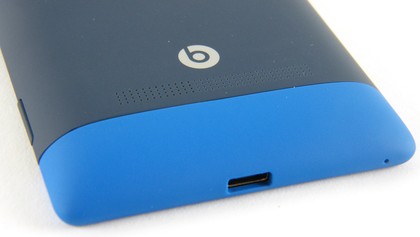
It continues to impress when you pick it up. At 113g it's got a decent amount of weight to it, making it feel like a fairly premium device rather than a cheap piece of plastic.
Speaking of plastic, there's no brushed metal or glass back on the HTC Windows Phone 8S, it's plastic through and through.
Despite that it doesn't seem flimsy. The rubbery, polycarbonate finish makes it easy to grip and feels good in the hand. It doesn't look or feel cheap either, just different and that's a good thing.

The front of the HTC 8S is dominated by the 4 inch screen, as you might expect. Above it there's HTC's logo and a speaker, while below it there's the iconic stripe adorned with three soft touch buttons, specifically home, back and search.
HTC have again stamped their logo in silver onto the back of the phone - this time much bigger. Above it you'll find the 5 megapixel camera lens, while below it there's a logo for 'Beats' audio, below that a speaker and below that the coloured stripe.
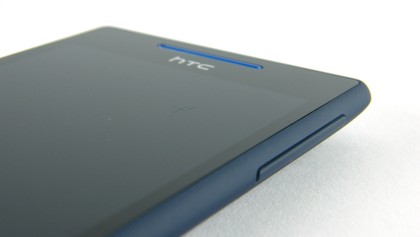
The top edge of the phone has a 3.5mm headphone port on the left and the power button on the right. The general positioning of the power button is fine, but it's hardly raised at all, making it hard to find and press, in fact we found that we often thought we'd pressed it only for nothing to happen as we'd either missed it or not applied enough pressure.
The bottom edge is home to a micro USB port, used for charging the handset and connecting it to a computer. You'll also find the microphone here.
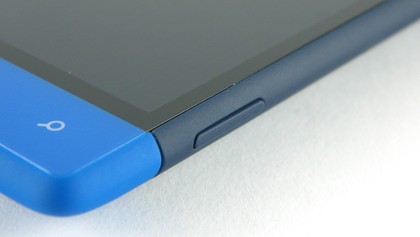
The top of the right edge houses a volume rocker while the bottom is home to a dedicated camera button - which both launches the camera and takes photos. The left edge has absolutely no buttons or ports on it.
You can't remove the back of the HTC Windows Phone 8S. Instead the little stripe at the bottom is removable and gives you access to the microSD card slot and the micro SIM.
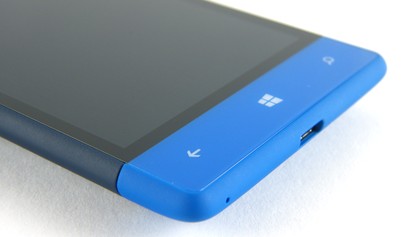
This does mean that you can't remove the battery, which is a bit of a shame, particularly considering it's 1,700 mAh in size, but otherwise it seems a lot more elegant than taking the whole back cover off.
It also means that the annoying practice of putting the microSD card slot behind the battery has been avoided, meaning that if you have more than one cards worth of media you can swap cards without turning the phone off. Given that there's only 4 GB of internal storage this could be genuinely useful for some users.
The coloured stripe is easy enough to remove but feels securely in place when you put it back on. It's also not as flimsy as some covers, so there's little worry of it breaking when you try to take it off.
James is a freelance phones, tablets and wearables writer and sub-editor at TechRadar. He has a love for everything ‘smart’, from watches to lights, and can often be found arguing with AI assistants or drowning in the latest apps. James also contributes to 3G.co.uk, 4G.co.uk and 5G.co.uk and has written for T3, Digital Camera World, Clarity Media and others, with work on the web, in print and on TV.
